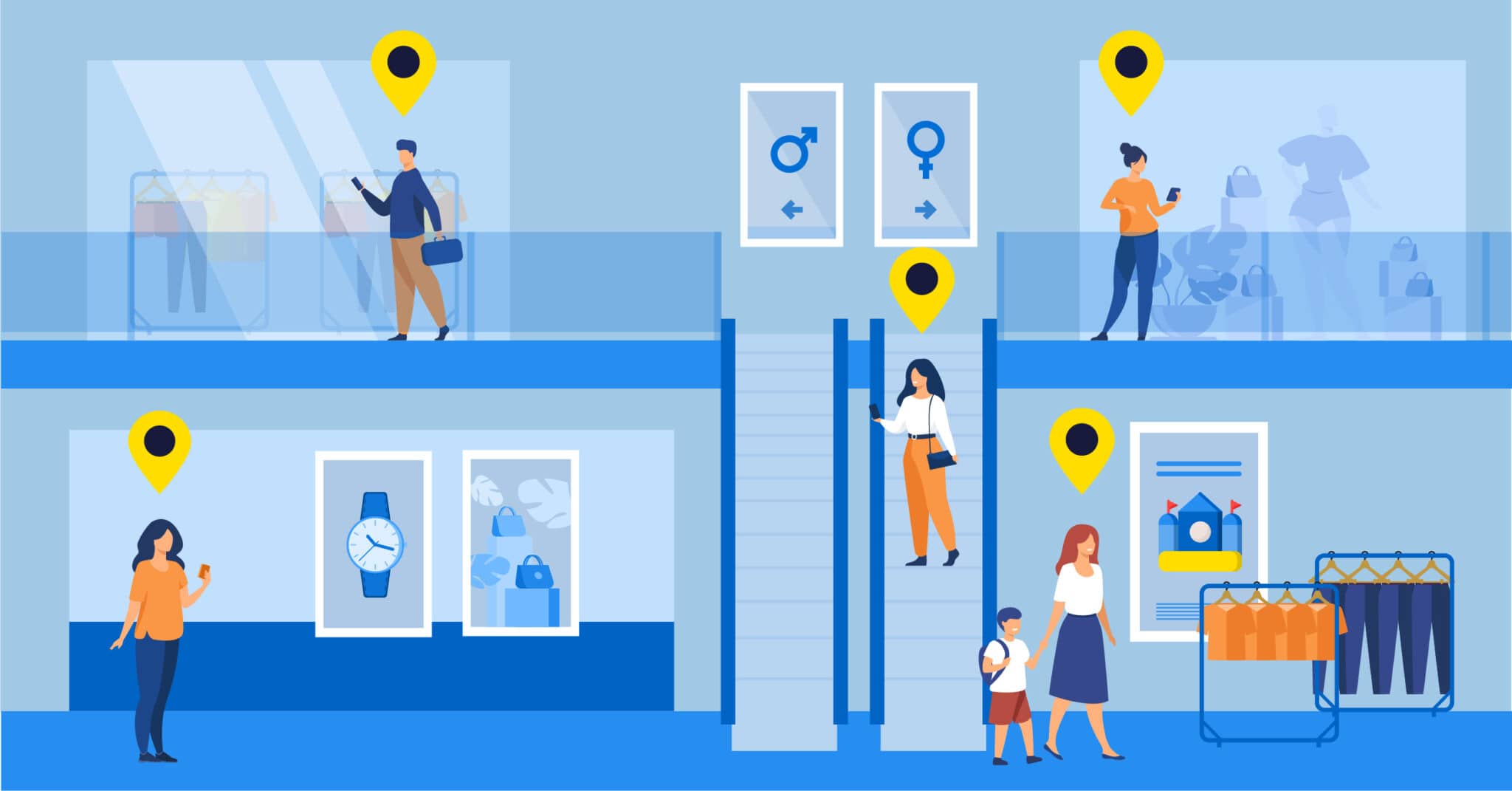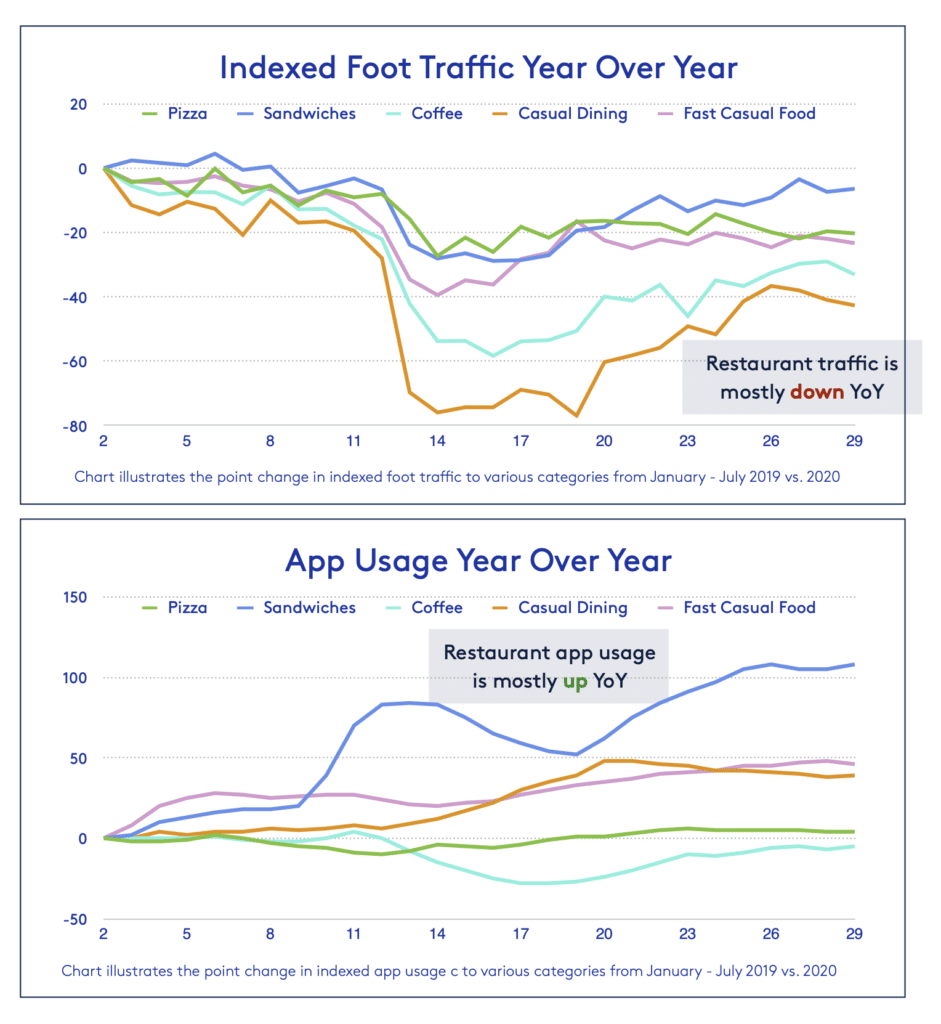Mobile Location Data Dynamically Identifies Trends in Retail, Real Estate and Beyond
February 16, 2021

Demographic data reflect the population characteristics, economic conditions and sometimes the buying preferences of people. Information from census surveys tell us where people live, their education, age, income, and also what they buy and where they work. But as we come to understand the usage and impact of mobile technology, location-based data is being captured at an ever-increasing rate and provides a more dynamic snapshot of how people search for information as well as travel and make purchases. Changing patterns of movement during the pandemic, for example, happened quickly and census data collected even one year ago is now out of date. Mobile location data now provides a better understanding of consumer behavior as people have adapted to volatile economic conditions.
While these data are the first step toward understanding consumer behavior, mobile location data also has inherent benefits for hyperlocal marketing, especially for retailers needing better audience profiles and segments. These data can slice time periods where peak foot traffic occurs, which enables retailers to predict sales volume, especially for quick service restaurants (QSR), specialty coffee as well as discretionary consumer categories. As an ancillary benefit of predicting sales, the data can also be useful in determining merchandise inventory and staffing.
Location Data Points to Impacts of The Pandemic
While mobile location data is useful to indicate accurate consumer trends, it was particularly useful to show the impact of the COVID-19 pandemic on the retail industry. Mobile location data such as footfall traffic, has been used to understand how businesses have been impacted by fewer people visiting retail establishments. Some industry sectors, like home improvement, have done well, and others, like restaurants, have seen their customer traffic hit a brick wall. Foot traffic in November 2020 to bookstores (down 62%), jewelry stores (down 56%), and hobby shops (down 59%) seemed to have fared the worst, with arts and craft supply retailers (down 35%) and home improvement centers (down 34%) faring better according to Gravy Analytics. While shoppers stayed home, online retailers or those that transitioned their sales to e-commerce platforms and quick-service restaurants that provided drive-thru or take-out options gained traffic. Chipotle Mexican Grill, for example, saw its online sales grow over 200% year over year (from October 2019 to 2020) according to MarketWatch, while its foot traffic declined 25% to 45% on a weekly basis according to Placer.ai.
This trend is further defined in a study by Foursquare that shows the decline in foot traffic to individual retail categories between July 2019 and 2020 but an increase in app usage in the same categories (see illustration below).
So, as the casual dining category experienced severe declines, as expected, consumers were still interested in fast casual, pizza and sandwiches as a substitute and those that leveraged their mobile apps for online purchases saw the greatest increase in usage. In the future, users of mobility data should watch for inflection points, especially if they can combine foot traffic in locations where COVID-19 vaccines are distributed in greater concentrations with fewer logistical challenges.
The technology has also become particularly useful to municipal, state and provincial government health agencies in helping to identify COVID-19 “hot spots,” tracking overall mobility for social distancing purposes, and identifying adherence to “stay at home” orders. Movement trends compiled by the COVID-19 Mobility Data Network, a consortium of infectious disease epidemiologists at universities with support from Facebook’s Data for Good project, follows mobility trends across several countries.
As in the examples above, the awareness of mobility data in the COVID-19 era shed light on how more dynamic, more real-time data has been utilized. But what’s next? What are the other applications where mobility data should be expected to provide us with location intelligence insight? Now that we understand more of its potential, users can now seek those additional applications of the data and technology. Let’s look at a few:
Mobile Location Data Applications
Business Recovery & Office Space Utilization
When will offices return to normal? It was thought that office workers would return by Summer 2020; then it was Fall; now it may not be until Fall 2021! According to a survey by JLL, a commercial real estate company (CRE), roughly one-quarter of office workers hope to return to the office full-time, while about half hope for an hybrid model, working remotely on average twice a week and in the office for the remainder of the workweek. The implications are enormous for commercial real estate in the long term as rental rates will fluctuate while corporations evaluate the need for as much space as they had been previously renting. New rental strategies will arise and the use of mobility data should provide the CRE industry the necessary data to support them.
Resiliency of Central Business Districts
Cities count on sales tax data to fund public transportation and emergency services. The decline of retail in central business districts (CBD) will radically alter how these services continue to function. According to the Brooking Institution, “Some localities impose their own sales tax on top of or in lieu of the state sales tax … Much of the decline affected services, such as hairdressing, which are less likely to be taxed than goods. There were large increases in purchases of food at the grocery store, which is typically not subject to the sales tax, and large declines in spending at restaurants and hotels, which are often taxed more heavily than other things.” How, then, do municipalities project sales tax in the post-pandemic era? The use of mobility data, both vehicle and footfall, will support insights as to the trends in how sales tax revenue will increase as more workers return to offices and consumers revisit retailers in CBD’s.
Experiences in Connected Stores
Movement data from inside stores, documented as “dwell time,” is important in determining user preferences. The merging of RFID and mobility data has created new opportunities in developing innovative user experiences. According to Retail Touchpoints, Rebecca Minkoff’s flagship store in New York City’s SoHo district is using RFID sensors connected to apparel to help with customer choices. “After you walk into your fitting room, the interactive mirror turns on. Thanks to RFID technology, the mirror recognizes all the items you’re trying on, and provides product recommendations.” Retailers that adopt this kind of user experience can now look at in-store traffic to specific departments, track inventory that has been sampled and then purchased, as well as whether the technology has attracted new customers.
Retail Touchpoints also described how the technology adoption had to accelerate in order to keep customers engaged, highlighting many applications of mobility data. “Adoption took place across all channels of the shopper journey, with retailers harnessing tech to pivot to touchless checkout, curbside pickup, controlling in-store traffic flow, appointment-based shopping and even same-day delivery via third-party vendors (and in some cases drones!).” In all, location-based data played a key part of technology adoption, implementation, and product delivery.
Accuracy, Proximity and Enrichment
The adoption of mobile footfall data provides industry users choices as to how the data are utilized. These data are more dynamic in that they provide a real-time and accurate understanding about how people visit certain locations and when. Providers of mobility data can assimilate information by points of interest (POI) and by retail brand, adding context to each location. Frequency of visit and proximity to a particular location is often an indication of brand interest and desire to purchase, as well as preferences to a competitor. Retailers can correlate these data to ad campaigns to indicate efficacy and therefore provide feedback to the level of ad spending. Taken together, these data provide powerful insights for real estate managers looking to secure prime locations for brand and franchise expansion.
Mobility, Connectivity, and Location
Consumers are connected to their favorite retailer by loyalty apps and those apps tell a story of how often customers purchase online or travel to brick-and-mortar establishments. As the world returns to some semblance of normalcy, consumers are likely to leave their home to renew their connection to their favorite retailer. Mobility data will help retailers to engage them once again, face to face and adjust their brand to leverage an omnichannel approach.
Where can Korem help?
The accelerated use of mobile location data is one indication of the digital transformation of geospatial technology and information. Since its beginnings, Korem has built its reputation on a foundation of geospatial expertise and an agnostic advisor on geospatial technology. Korem is also a premier partner with leaders such as Foursquare, Environics Analytics, HERE Technologies and Precisely, providing the most extensive portfolio of mobility data including POIs, visit data and real-time proximity data to assist you in your marketing efforts. We’ll customize and integrate data to make certain it works with your database of record and to make it easier for you to perform location analytics.





